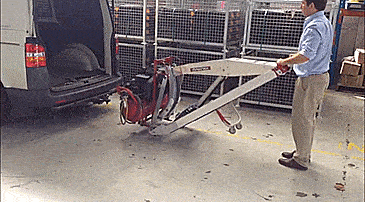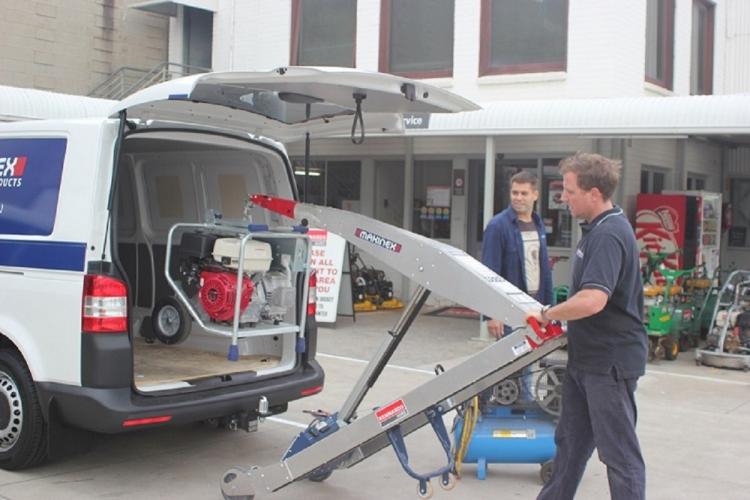Powered Industrial Trucks - Forklifts
OSHA requires that all worked be trained and certified before driving a forklift, even if forklift driving is a very small part of their job. Training is also proven to reduce accidents and injuries. OSHA estimates that approximately 77% of forklift accidents could have been prevented with proper training. Save Time and Money with our Forklift Certification Kit & CD Rom that allows you to certify an UNLIMITED number of operators in as little as 1 hour. 100% OSHA compliant! Brother scanner driver for mac. We also offer a Train the Trainer certification since OSHA requires at least one person in your company to be an expert.
Hand Powered Forklifts
Overview
- Protect Workers Operating and Working Near Forklifts. OSHA Alert (Publication 3973), (2019).
- Safe Forklift Operation. OSHA QuickCard™ (Publication 3949), (2019).
- Sample Daily Checklists for Powered Industrial Trucks. Prepared by OSHA and the Industrial Trucking Association (ITA) Alliance. OSHA notes that this checklist and related graphics were developed in cooperation with the ITA as part of the OSHA-ITA Alliance.
- Sample Daily Checklists for Powered Industrial Trucks. Prepared by the UAW-Ford National Joint Committee on Health and Safety. OSHA thanks the UAW-Ford National Joint Committee on Health and Safety for granting permission to use the checklists and related graphics.
- Protecting Young Workers: Prohibition Against Young Workers Operating Forklifts. OSHA Safety and Health Information Bulletin (SHIB), (September 30, 2003). Informs employers that youth employment regulations (29 CFR 570) promulgated under the Fair Labor Standards Act prohibit most employees under the age of 18 years from operating forklifts for non-agricultural operations and reminds employers that all forklift operators must be trained and certified.
- Powered Industrial Trucks (Forklift). OSHA eTool. Provides information on OSHA's Powered Industrial Truck requirements [29 CFR 1910.178] and industry best practices.
What are powered industrial trucks?
Powered industrial trucks, commonly called forklifts or lift trucks, are used in many industries, primarily to move materials. They can also be used to raise, lower, or remove large objects or a number of smaller objects on pallets or in boxes, crates, or other containers. Powered industrial trucks can either be ridden by the operator or controlled by a walking operator. Over-the-road haulage trucks and earth-moving equipment that has been modified to accept forks are not considered powered industrial trucks.

What are the hazards associated with operating powered industrial trucks?
There are many types of powered industrial trucks. Each type presents different operating hazards. For example, a sit-down, counterbalanced high-lift rider truck is more likely than a motorized hand truck to be involved in a falling load accident because the sit-down rider truck can lift a load much higher than a hand truck. Workplace type and conditions are also factors in hazards commonly associated with powered industrial trucks. For example, retail establishments often face greater challenges than other worksites in maintaining pedestrian safety. Beyond that, many workers can also be injured when (1) lift trucks are inadvertently driven off loading docks; (2) lifts fall between docks and an unsecured trailer; (3) they are struck by a lift truck; or (4) they fall while on elevated pallets and tines.
It is a violation of Federal law for anyone UNDER 18 years of age to operate a forklift or for anyone OVER 18 years of age who is not properly trained and certified to do so. Download the Sticker.
What can be done to reduce the hazards related to powered industrial trucks?
Hand Powered Forklift For Sale
/GettyImages-150951481-1--578a50e13df78c09e9e2061b.jpg)
Determining the best way to protect workers from injury largely depends on the type of truck operated and the worksite where it is being used. Employers must ensure that each powered industrial truck operator is competent to operate a powered industrial truck safely, as demonstrated by the successful completion of the training and evaluation specified in 29 CFR 1910.178(l)(1).
Standards
Free games on the app store for mac. Powered industrial trucks are addressed in specific OSHA standards for general industry and maritime.
Hazards and Solutions

Provides references that may aid in recognizing hazards associated with powered industrial trucks and provides examples of possible solutions.
Additional Resources
Provides links and references to additional resources related to powered industrial trucks.
- Protect Workers Operating and Working Near Forklifts. OSHA Alert (Publication 3973), (2019).
- Safe Forklift Operation. OSHA QuickCard™ (Publication 3949), (2019).
- Sample Daily Checklists for Powered Industrial Trucks. Prepared by OSHA and the Industrial Trucking Association (ITA) Alliance. OSHA notes that this checklist and related graphics were developed in cooperation with the ITA as part of the OSHA-ITA Alliance.
- Sample Daily Checklists for Powered Industrial Trucks. Prepared by the UAW-Ford National Joint Committee on Health and Safety. OSHA thanks the UAW-Ford National Joint Committee on Health and Safety for granting permission to use the checklists and related graphics.
- Protecting Young Workers: Prohibition Against Young Workers Operating Forklifts. OSHA Safety and Health Information Bulletin (SHIB), (September 30, 2003). Informs employers that youth employment regulations (29 CFR 570) promulgated under the Fair Labor Standards Act prohibit most employees under the age of 18 years from operating forklifts for non-agricultural operations and reminds employers that all forklift operators must be trained and certified.

- Powered Industrial Trucks (Forklift). OSHA eTool. Provides information on OSHA's Powered Industrial Truck requirements [29 CFR 1910.178] and industry best practices.
Case report:#12WA015
Issued by: Washington State Fatality Assessment and Control Evaluation Program
Date of incident: May 2012
A 61-year-old longshore worker operating a forklift died after he was crushed between a forklift’s mast and the overhead guard of the operator’s cab. The incident occurred when the operator left the forklift’s seat, climbed over the console, and stood on the dash between the mast and the overhead guard – presumably to look into a bin elevated on the forks. He did not turn off the forklift engine. As he stood on the dash, his right foot moved backward and contacted the mast tilt control lever on the console. The mast tilted back, crushing the operator’s torso between the mast cross member and the overhead guard. Workers helped him down and administered first aid. Paramedics transported the operator to a hospital, where he died in the emergency room. A toxicology report indicated the operator had a blood alcohol concentration of 0.026%.
To help prevent similar incidents, employers should:
- Ensure forklift operators never position themselves between the overhead guard of the operator’s cab and the mast while the forklift is running.
- Ensure standard operating procedures are followed, and review and revise them if necessary.
- Ensure operators don’t use alcohol before or while operating equipment.
- Consider purchasing or equipping forklifts with a safety interlock device that prevents movement when the operator is not seated properly at the controls.
